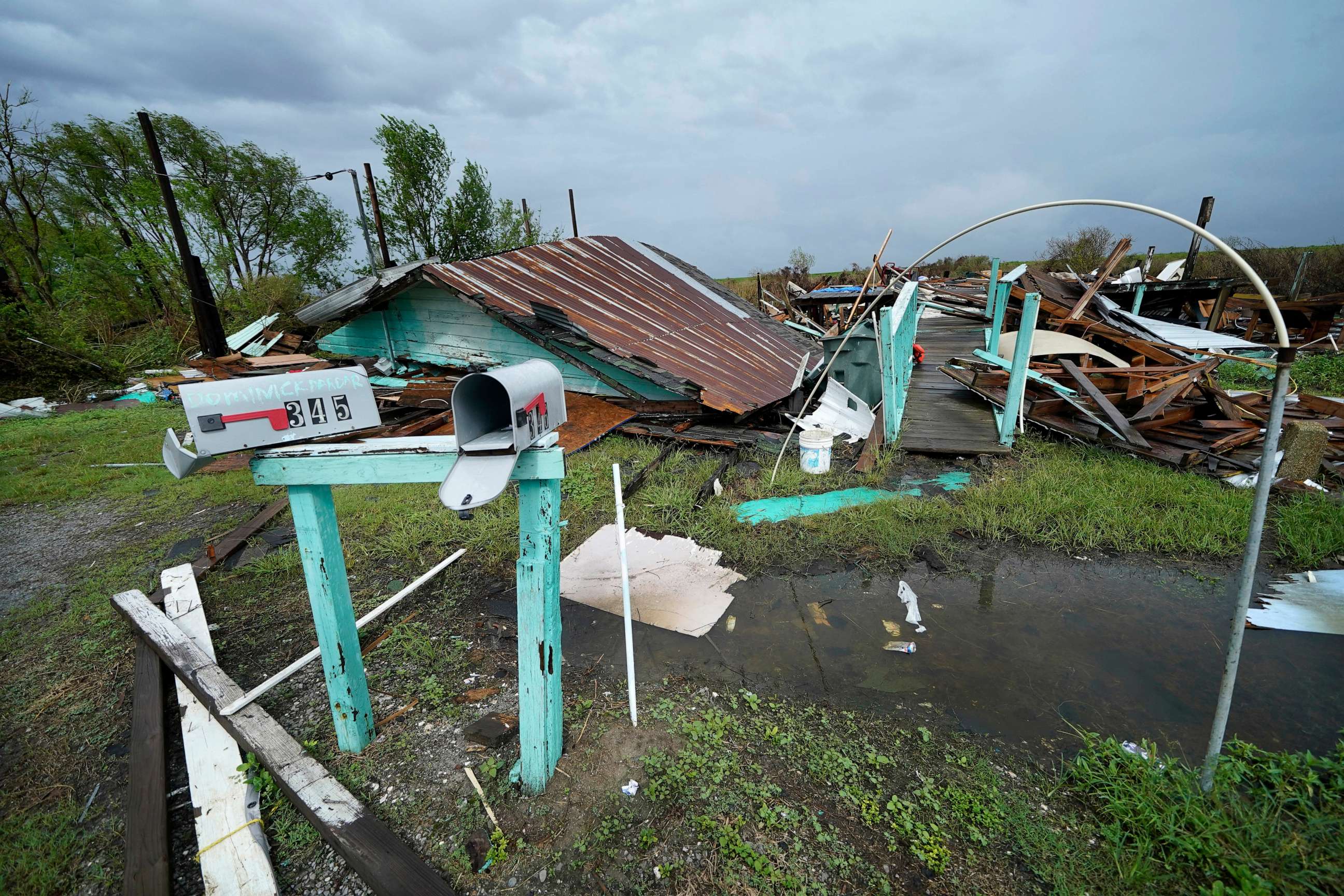How sea level rise drove the native community of Isle de Jean Charles from their homes
The population consisted mostly of the Charles Choctaw and United Houma tribes.
The climate crisis is often touted as an emergency that needs action now to stave off negative impacts in the future. But for one native community in the U.S., the consequences of climate change are already here.
The community Isle de Jean Charles, a barrier island located in Terrebonne Parish, Louisiana, where the delta of the Mississippi River opens to thousands of wetlands in the Gulf, is already being forced from their ancestral homes due to rising sea levels and climate change.
What was once a thriving town with 400 residents on 22,000 acres of land -- mostly members of the Charles Choctaw Nation and United Houma Nation -- now the majority of residents have left, as 98% of the island has been swallowed up by brackish waters, shrinking the once 5-mile-wide island to just half a mile and 320 acres.
"This is only the beginning," Torbjorn Tornqvist, a professor of geology at Tulane University, told ABC News. "We're going to see many more communities that are going to disappear."

The effects of climate change have routinely shut down life on the island for decades, residents told ABC News. Storms would cut off power. Hurricanes would mangle vulnerable homes -- especially Hurricane Ida, which made landfall about 60 miles away near Port Forchoun, Louisiana in 2021, as a Category 4 storm.
In addition to the sea level rise, levees that were built upstream prevented natural sediment to replenish the islands, which then caused the coastal wetlands to sink instead, Tornqvist said.
"When you take all those things together, you're looking at very, very high rates of sea level rise relative to the land," Tornqvist said.
Chris Brunet, a former resident of Isle de Jean Charles, told ABC News that he left because his "environment was being challenged."
"As a gradual process, more land was being eroded, you know, by the Gulf of Mexico," he said. "That's what brought me to make a decision I never wanted to make."

The residents of Isle de Jean Charles are considered by the federal government to be the first community displaced by climate change.
In January 2016, the U.S. Department of Housing and Urban Development awarded the state of Louisiana $48.3 million to rebuild a new town about 40 miles north of Isle de Jean Charles -- aptly named "New Isle."
The land and homes, constructed 12 feet above sea level, are free to all recent residents of Isle de Jean Charles.
The Rev. Roch Naquin, a former resident of Isle de Jean Charles, described his new home as "beautiful" with more protection than back on the island.
"I tell people, 'This is the most luxurious house I've ever lived in,'" Naquin said.

Among the residents of Isle de Jean Charles who have no plans to leave are Edison and Elizabeth Dardar.
"I got my home over here, I was raised here, so I'm gonna stay here," Elizabeth Dardar said.
Edison Dardar said he intends to rebuild.
"Like I always say, we fight for our country, and we can fight for our land."

Starting over, learning a new way of life and a new experience is very difficult for many of the residents, Chantel Comardelle, tribal secretary for the Isle of Jean Charles Tribal Government, told ABC News.
"I really respect them for their decision to not leave. I think they had to make that choice for themselves," Comardelle said.
The barrier islands in the region are disappearing so quickly that the National Oceanic and Atmospheric Administration has been deleting the names of bayous, streams and wetlands in the area, as they now covered by Gulf of Mexico waters.

Josh Ellender captain of Ellender Charters in Terrebonne Parish, Louisiana, told ABC News that boaters "have to relearn the waters every year" due to the rapid pace of change.
"Every time we come out, every season, it’s drastic changes, and all of our landmarks are disappearing," Ellender said.




